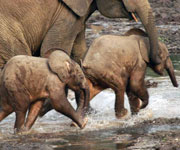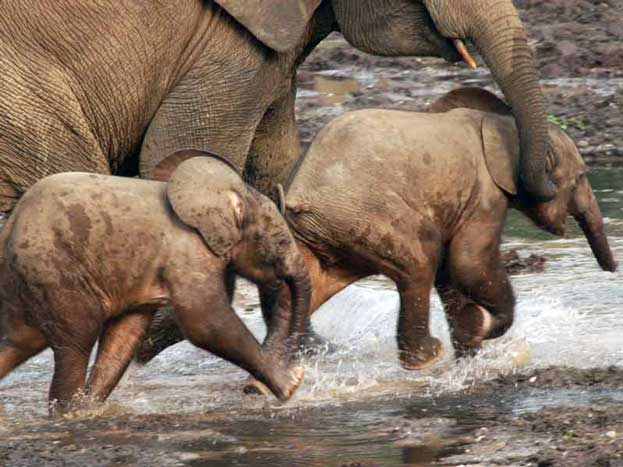Sangha Trinational is situated in the north-western Congo Basin, where Cameroon, Central African Republic and Congo meet, the site encompasses three contiguous national parks totalling around 750,000 ha. Much of the site is unaffected by human activity and features a wide range of humid tropical forest ecosystems with rich flora and fauna, including Nile crocodiles and goliath tigerfish, a large predator. Forest clearings support herbaceous species and Sangha is home to considerable populations of forest elephants, critically endangered western lowland gorilla, and endangered chimpanzee. The site's environment has preserved the continuation of ecological and evolutionary processes on a huge scale and great biodiversity, including many endangered animal species.

Continent: Africa
Country: Cameroon, Congo, Central African Republic
Category: Natural
Criterion: (IX)(X)
Date of Inscription: 2012
Situated within three nations
Sangha Trinational (TNS) is a transboundary conservation complex in the North-western Congo Basin where Cameroon, the Central African Republic and the Republic of Congo meet. TNS encompasses three contiguous national parks totalling a legally defined area of 746,309 hectares. These are Lobéké National Park in Cameroon, Dzanga-Ndoki National Park in the Central African Republic and Nouabalé-Ndoki National Park in the Republic of Congo.
Dzanga-Ndoki National Park is comprised of two distinct units. The parks are embedded in a much larger forest landscape, sometimes referred to as the TNS Landscape. A buffer zone of 1,787,950 hectares has been established in recognition of the importance of the broader landscape and its inhabitants for the future of the property. The buffer zone is Dzanga-Sanga Forest Reserve in the Central African Republic, which connects the two units of Dzanga-Ndoki National Park.
 |
| Sangha Trinational Wild Elephents |










0 comments:
Post a Comment